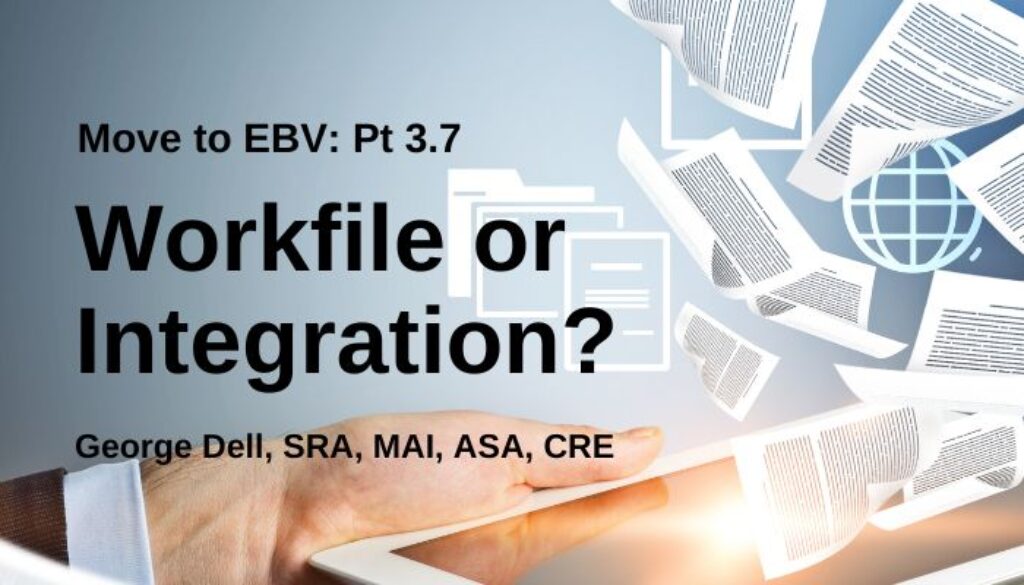Workfile is required, (or not?).
This part 7 of a multipart look at issues in valuation standards. Editor’s Note: This is Standards, part 3.7 of George Dell’s series on How Do I Move to EBV? Links to the earlier posts are here.
USPAP WORKFILE
The “workfile” concept works well as an effort at documenting an appraiser’s data, information, and “support” for opinions and conclusions. Apparently, analysis or logic is not to be a part of the workfile. USPAP defines the word workfile as that which is “necessary” to show compliance with USPAP.
The USPAP workfile is also to include “true copies of all written reports. Failure to comply becomes a “violation” of the ethics rule. (Moral principles turned into enforceable law.) This is tantamount to saying “thou shalt not be a bad person.”
DATA SCIENCE INTEGRATION
The Data Science Approach to asset analysis is comprehensive, and comprises all elements: Data; Information; Analysis; Logic; and Delivery. In the CAA (Community of Asset Analysts), we apply EBV (Evidence Based Valuation)©, integration, using currently available open-source software (primarily R Quarto). Quarto (and its predecessor R-Markdown) fully integrate and deliver all documentation in a single, complete data stream. This includes the assumptions, data, information, knowledge, probabilities, algorithms, and visuals, and mathematical results. In summary list:
- Problem, scope, assumptions, definitions
- Data: Parameters and full data frame
- Economic/behavioral relationships
- Predictive methods, algorithms
- Reproducible work delivery
A USPAP workfile is suitable for subjective analysis, such as picking comps, declaring adjustments, and rhetorically explaining how a range of (three approaches) numbers can be narrowed (supported) down to one exact, “point-value” opinion.
The workfile may or may not include the complete set of what an appraiser takes into consideration.
Evidence Based Valuation (EBV)© is based on the principle that integrated together, the elements above (problem, data, economics, algorithms, and inclusive data-stream) enable reproducible work product.
Benefits of an all-inclusive, integrated reproducible documentation of inputs, analytics, judgment calls, and outputs – enable other services and needs of clients, regulators, and the public. The ability to replicate work enables individual reliability/risk scoring, forecast and fundamental values, and real-time consistent updates (unlike inconsistent “automated” products). Better accuracy, understandability, and usefulness.
A USPAP workfile, in its incomplete, subjective form will continue to be required by those who have to require it, so long as USPAP is governmentally “enforced.” This enforcement is placed on licensed appraisers, but not on unlicensed valuers nor on automated valuations (“untouched” by humans).
An EBV, data-science-evidence-based reproducible product requires no workfile, as it comprises the data, the code, and the visible analysis — beginning to end. Not difficult, yet not required.
Which is better? A workfile, or the complete work?
